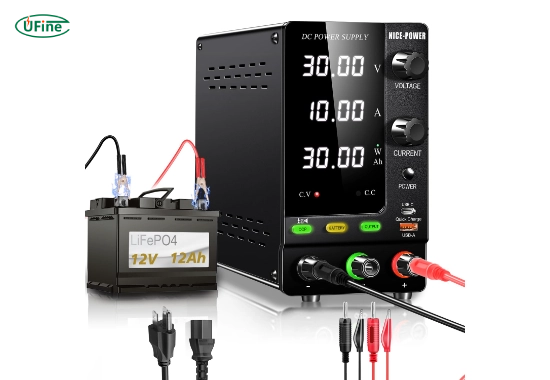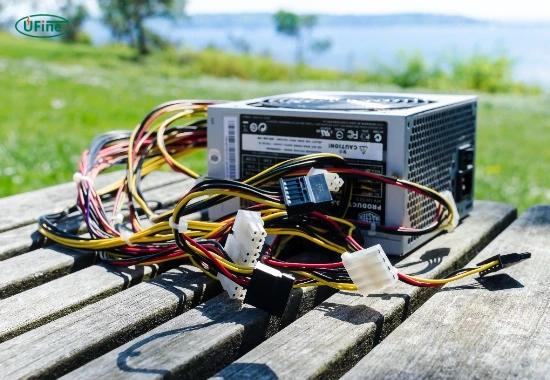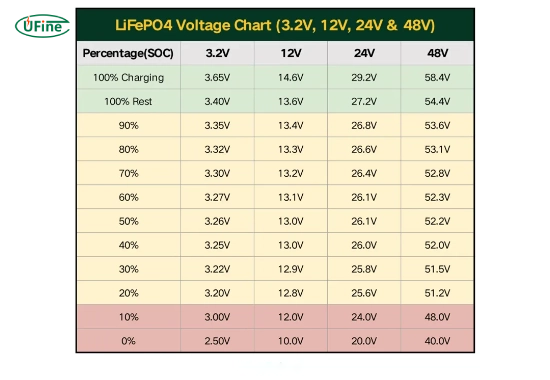
- Part 1. What does it mean to charge a LiFePO4 battery with a power supply?
- Part 2. What is a power supply, and why should you use it?
- Part 3. What are the voltage requirements for charging a LiFePO4 battery with a power supply?
- Part 4. What are the current requirements for charging a LiFePO4 battery with a power supply?
- Part 5. How to set up a power supply to charge LiFePO4 batteries?
- Part 6. What are the stages of charging LiFePO4 batteries?
- Part 7. What safety precautions should you take?
- Part 8. How to balance LiFePO4 batteries during charging?
- Part 9. Can you charge LiFePO4 batteries in series or parallel with a power supply?
- Part 10. FAQs
Lithium Iron Phosphate (LiFePO4) batteries are known for their long lifespan, reliability, and safety. People widely use them in solar systems, RVs, boats, and electric vehicles. However, charging these batteries properly with a power supply is crucial to maintain their performance and longevity.
This article will focus specifically on charging a LiFePO4 battery with a power supply, explaining the voltage and current requirements, charging methods, and safety precautions. Whether you’re a beginner or an experienced user, this guide will provide step-by-step instructions and practical tips.
Let’s dive into the details!
Part 1. What does it mean to charge a LiFePO4 battery with a power supply?
Charging a LiFePO4 battery with a power supply means using a programmable or adjustable power supply instead of a dedicated LiFePO4 charger. A power supply allows you to manually set the voltage and current to match the specific requirements of your battery.
This approach is helpful for:
- Custom setups: When you need precise control over the charging process.
- DIY projects: These are for experimenting with different charging methods.
- Emergency use: If you don’t have a dedicated LiFePO4 charger available.
However, to safely charge your LiFePO4 battery, you must understand its voltage and current requirements. Incorrect settings can lead to overcharging, undercharging, or even permanent damage to the battery.
Part 2. What is a power supply, and why should you use it?
A power supply is an electronic device that delivers regulated voltage and current to an electrical load. Unlike standard chargers, power supplies are highly adjustable, making them ideal for charging batteries with specific needs like LiFePO4.
Why use a power supply to charge LiFePO4 batteries?
- Control: You can fine-tune the voltage and current to match your battery’s specifications.
- Versatility: A single power supply can charge batteries of different voltages and capacities.
- Cost-effectiveness: You don’t need to buy a separate charger if you own a power supply.
However, using a power supply requires manual input and monitoring, so it’s not as plug-and-play as a dedicated charger.
Part 3. What are the voltage requirements for charging a LiFePO4 battery with a power supply?
Voltage is one of the most critical factors when charging LiFePO4 batteries. Each LiFePO4 cell has a nominal voltage of 3.2V and a maximum charging voltage of 3.65V.
To calculate the correct charging voltage for a battery pack, multiply 3.65V by the number of cells in series:
- Single-cell: 3.65V
- 4-cell (12V system): 14.6V
- 8-cell (24V system): 29.2V
- 16-cell (48V system): 58.4V
Important tips:
- Always set the power supply to the exact voltage required for your battery pack.
- Never exceed the maximum charging voltage, as this can damage the cells.
- Verify the voltage using a multimeter before starting the charging process.
LiFePO4 Voltage Chart Guide: Everything You Need to Know
Part 4. What are the current requirements for charging a LiFePO4 battery with a power supply?
The current determines how fast the battery charges. For LiFePO4 batteries, the recommended charging current is between 0.2C and 0.5C, where C is the battery’s capacity in amp-hours (Ah).
For example:
- A 100Ah battery can be charged at 0.2C (20A) for slow charging or 0.5C (50A) for faster charging.
- A 50Ah battery can be charged at 0.2C (10A) or 0.5C (25A).
Key considerations:
- Charging at lower currents (e.g., 0.2C) is gentler on the battery and can extend its lifespan.
- Avoid exceeding the manufacturer’s maximum current rating to prevent overheating.
Part 5. How to set up a power supply to charge LiFePO4 batteries?
Follow these steps to charge your LiFePO4 battery with a power supply safely:
- Verify your battery’s specifications: Check the manual or datasheet for the battery’s recommended charging voltage and current.
- Connect the battery to the power supply: Use high-quality cables and ensure a secure connection.
- Set the voltage: Adjust the power supply to the correct voltage for your battery pack.
- Set the current limit: Configure the power supply to the appropriate charging current (0.2C to 0.5C).
- Monitor the charging process: Use a multimeter to confirm the voltage and current.
- Pro Tip: Always observe the charging process and disconnect the battery once it reaches full charge. Leaving it connected for too long can overcharge the cells.
Part 6. What are the stages of charging LiFePO4 batteries?
Charging LiFePO4 batteries involves two primary stages:
Bulk Stage:
- The power supply delivers constant current (CC) to charge the battery quickly.
- The voltage gradually rises until it reaches the set limit.
Absorption Stage:
- The power supply maintains a constant voltage (CV).
- The current decreases as the battery fills up.
- Unlike lead-acid batteries, LiFePO4 batteries do not require a float stage. Once fully charged, they should be disconnected from the power supply to prevent overcharging.
Part 7. What safety precautions should you take?
Charging LiFePO4 batteries with a power supply can be safe if you follow these precautions:
- Avoid overcharging: Set the voltage limit accurately and monitor the process.
- Prevent overheating: Ensure the charging current is within the recommended range.
- Use a Battery Management System (BMS): This protects the battery from overvoltage, undervoltage, and overcurrent.
- Work in a ventilated area: Charging can generate heat, so ensure proper ventilation.
- Double-check connections: Secure all cables to avoid sparks or short circuits.
Part 8. How to balance LiFePO4 batteries during charging?
Balancing ensures that all cells in a LiFePO4 battery pack charge evenly. This is especially important in series-connected packs, where voltage imbalances can occur.
How to balance cells:
- Use a charger or power supply with a built-in balancing function.
- Add an external battery balancer to your setup.
- Allow the BMS to manage cell balancing automatically.
- Balancing helps maintain the battery’s health and ensures each cell performs optimally.
Part 9. Can you charge LiFePO4 batteries in series or parallel with a power supply?
Yes, you can charge LiFePO4 batteries in both series and parallel configurations using a power supply:
- Series charging: Match the power supply voltage to the total voltage of the series pack (e.g., 14.6V for a 4-cell pack).
- Parallel charging: Ensure all batteries are at the same state of charge (SOC) before connecting them.
Always use a BMS to manage and protect the batteries during charging.
Part 10. FAQs
-
What voltage should I set on the power supply to charge a 12V LiFePO4 battery?
Set the voltage to 14.6V for a 12V (4-cell) LiFePO4 battery. -
Can I charge a LiFePO4 battery without a BMS?
While it’s possible, it’s not recommended. The BMS protects the battery from overcharging, undercharging, and other risks. -
How long does charging a LiFePO4 battery with a power supply take?
The charging time depends on the battery’s capacity and current. For example, a 100Ah battery charged at 20A (0.2C) will take about 5 hours to charge fully. -
What happens if I overcharge my LiFePO4 battery?
Overcharging can cause overheating, reduced lifespan, or permanent damage to the battery. Always use a power supply with precise voltage control. -
Can I leave my LiFePO4 battery connected to the power supply overnight?
Leaving the battery connected to a power supply for extended periods is unsafe. Disconnect it once fully charged.
Related Tags:
More Articles

Battery Load Test: A Comprehensive Guide
Step-by-step battery load test guide for car, solar & industrial use. Learn how to load test a battery, interpret voltage charts, and avoid common mistakes.
The Comprehensive Guide to Battery Balancing and Battery Balancer
Discover how battery balancers improve lithium battery performance, lifespan, and safety. Learn types, functions, and tips to choose the right balancer.
What Is the Best Voltage for a Chainsaw Battery?
Compare 12V-80V chainsaw batteries for light pruning, medium firewood, and professional cutting. See best battery chainsaw with runtime charts and safety tips.
Lithium VS. Alkaline Batteries: A Comprehensive Comparison
Lithium batteries last 3–7× longer than alkaline and perform better in cold weather. Compare lifespan, cost, safety, and best uses to choose the right battery.
Comparing Lithium-Sulfur and Lithium-Ion Batteries: Which is Right for You?
Compare lithium-sulfur (Li-S) and lithium-ion batteries on energy, lifespan, cost, safety, and applications. Best choice for drones, EVs, and electronics.





